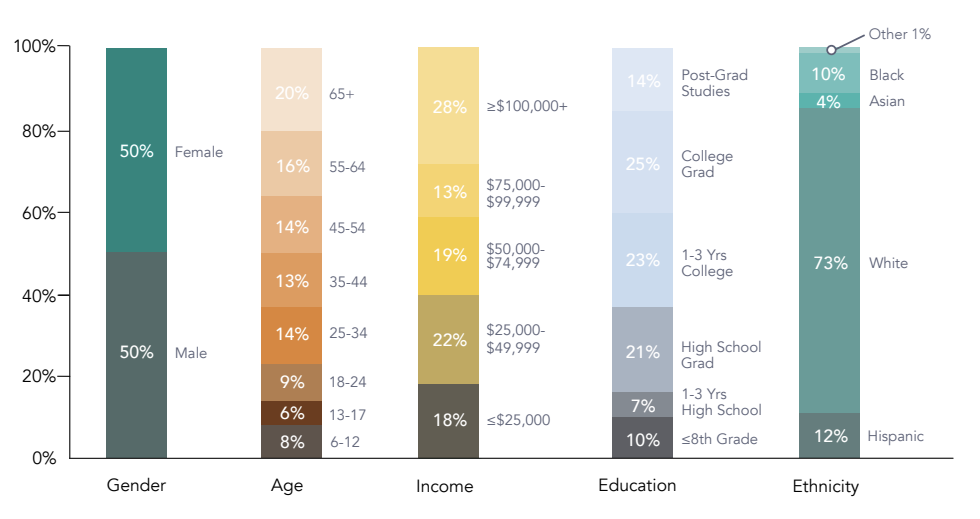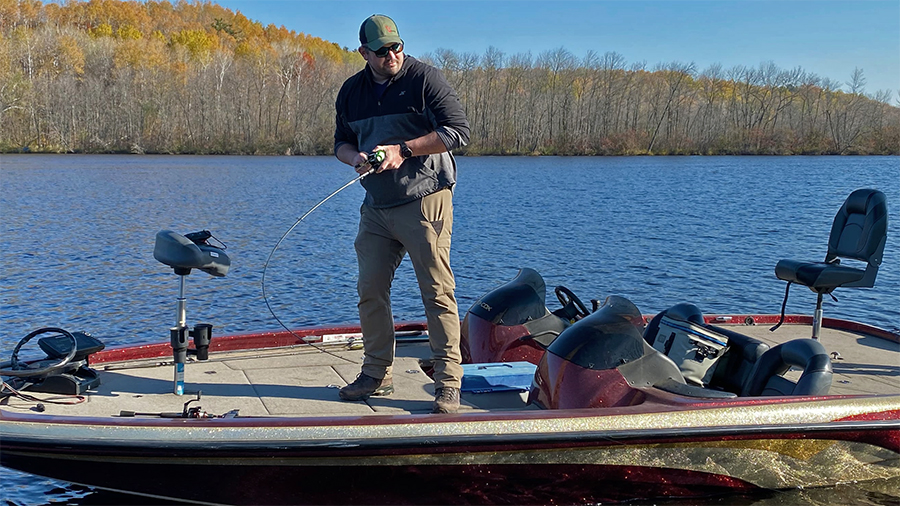The Recreational Boating & Fishing Foundation (RBFF) reported that the post-pandemic increase in fishing participation continues to set record numbers on the water; however, data from a recent report produced by the RBFF and the Outdoor Foundation (OF) found that churn poses a challenge for the industry, especially among female participants.
The recently released 2024 Special Report on Fishing found that 57.7 million Americans ages six and older took to the nation’s waterways in 2023 to fish recreationally, a 6 percent increase from 2022. These numbers reportedly topped the all-time records set in 2020 during pandemic-related shutdowns, and the data continues to underscore the critical importance of introducing fishing at a young age.
According to the report, nearly seven in 10 participants fished one to eleven times in 2023, or less than one outing per month.
The RBFF noted in the report that participation among more frequent anglers has gradually declined since it started tracking participation rates in 2007, with just 31 percent fishing at least once a month in 2023, down from 41 percent in 2007.
The report’s “leaky bucket” analysis measures the annual churn of fishing participants, or those joining or rejoining the activity, compared to those who quit participating in the sport.
Following modest declines in 2021 and modest gains in 2022, the report’s data shows a sizable net increase of 3.2 million fishing participants in 2023.
The annual churn rate, which compares the number of people who joined or continued fishing to those who quit) was negative 23 percent in 2023, the same level as in 2022.
Leaky Bucket Analysis
 The RBFF reported that retaining newcomers remained an integral part of fishing’s continued success, and that effort continues to be a challenge for the industry.
The RBFF reported that retaining newcomers remained an integral part of fishing’s continued success, and that effort continues to be a challenge for the industry.
The report notes that 87 percent of fishing participants fished before age 12, but participation rates fell sharply after age 18. Specifically, female youth quit fishing at an 11 percent higher rate than male youth.
“These disparities show families with young children are key to growing future participation,” said RBFF President & CEO Dave Chanda. “Connecting youth to fishing will ensure that our nation’s waterways are protected, our communities are healthy, and our industry is thriving.”
According to the latest report, relaxation was a key driver for new anglers in 2023, with many in the category also reporting that spending time with family and friends inspired them to fish.
In addition to these results, the report provides a comprehensive look at the state of fishing participation in the U.S. A summary of key takeaways include:
- 21.3 million women fished in 2023, the highest number of female participants.
- 4.2 million Americans tried fishing for the first time in 2023.
- Fishing participation among Hispanic Americans ages six and older nearly doubled in a decade, increasing from 3.5 million in 2013 to 6.3 million in 2023.
- 2023 saw fly fishing reach a milestone, with participation rates topping 8 million for the first time.
- New data in 2023, 5.2 million Black Americans ages six and older fished in 2023, the highest number since activity tracking began in 2007.
- Females represented 37 percent of total anglers, 41 percent of first-time participants, and 45 percent of those considering fishing.
- Saltwater fishing’s growth continued in 2023, as participation increased 5 percent to 15 million participants, the highest number on record, exceeding 2020 by 500,000 anglers and pre-COVID 2019 by nearly 2 million.
“Throughout 2023, fishing remained a gateway to health and wellbeing for the more than 4.2 million first-time participants. These new anglers are younger, more diverse, and digitally connected,” added Chanda. “By understanding the demographics, motivations and barriers of participants, the fishing industry can better reach America’s youngest citizens, nurture a new generation of fishing enthusiasts, and retain those new to the sport.”
Lost Participants
 The lost participants in 2023 tended to be older, with half over 45. About four in 10 reported an annual household income over $75,000, and over six in 10 participants had at least some college education. The RBFF noted that it can build long-term participation by focusing on younger participants.
The lost participants in 2023 tended to be older, with half over 45. About four in 10 reported an annual household income over $75,000, and over six in 10 participants had at least some college education. The RBFF noted that it can build long-term participation by focusing on younger participants.
“The truth is, the decline in participation among our youth represents a huge opportunity to do more as an industry and meet the moment together,” said Stephanie Vatalaro, SVP of strategy and operations, RBFF. “Girls who fish become women who fish. It’s our charge to reach newcomers and invite them to have great fishing experiences, showcase convenient water access, provide beginner educational resources and cost-effective equipment, and emphasize why getting out on the water is more than a hobby, it’s a way of life.”
The RBFF is a nonprofit whose mission is “to increase participation in recreational angling and boating, thereby protecting and restoring the nation’s aquatic natural resources.”
The Special Report on Fishing, now in its 14th year, provides an overview of fishing participation in the U.S., including participation numbers among key groups, barriers to entry, reasons for participation, and more. RBFF created the report in partnership with the Outdoor Foundation.
Go here to read the full report.
Infographics and data courtesy the RBFF, Outdoor Foundation
Image courtesy Trika















